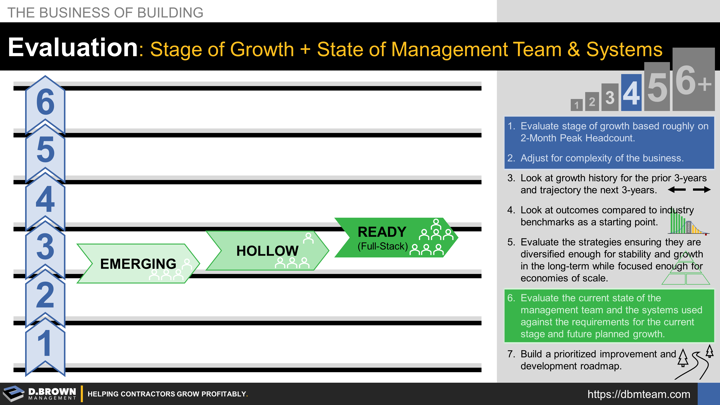Prerequisite: Management Team Development Phases Within Each Stage of Growth
7-STEP EVALUATION
These are broad steps, and most must be performed with the help of someone who is both unbiased and experienced at working at least two stages of growth past where your company is currently at. Without this, they won't have the requisite clarity to help you evaluate effectively, develop an actionable plan, and then navigate.
- Evaluate stage of growth based roughly on 2-Month Peak Headcount.
- Adjust for complexity of the business.
- Look at growth history for the prior three years and trajectory the next three years.
- Look at outcomes compared to industry benchmarks as a starting point, checking for indicators that you might be at a growth inflection point.
- Evaluate the strategies, ensuring they are diversified enough for stability and growth in the long-term while focused enough for economies of scale.
- Evaluate the current state of the management team and the systems used against the requirements for the current stage and future planned growth.
- Build a prioritized improvement and development roadmap.
Remember that even with the right people helping you with this evaluation, it is unlikely that 100% of the answers will be clear to everyone on the team.
Learn More: Stratified Systems Theory (SST)

